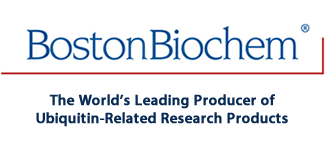
Recombinant Human Di-Ub Non-hydrolyzable (K48) Agarose, CF Summary
Each Ubiquitin contains a Pro substitution at position 73.
Product Datasheets
Carrier Free
CF stands for Carrier Free (CF). We typically add Bovine Serum Albumin (BSA) as a carrier protein to our recombinant proteins.Adding a carrier protein enhances protein stability, increases shelf-life, and allows the recombinant protein to be stored at a more dilute concentration.The carrier free version does not contain BSA.
In general, we advise purchasing the recombinant protein with BSA for use in cell or tissue culture, or as an ELISA standard.In contrast, the carrier free protein is recommended for applications, in which the presence of BSA could interfere.
UCN-202
| Formulation | 100 μl of agarose supplied in a 200 μl total volume of 20% Ethanol. |
| Shipping | The product is shipped with polar packs. Upon receipt, store it immediately at the temperature recommended below. |
| Stability & Storage: | Do not freeze.
|
Reconstitution Calculator
Background: Di-Ubiquitin
With a predicted molecular weight of 17 kDa, Di-Ubiquitin is composed of two Ubiquitin monomers that are covalently linked through an isopeptide bond, which typically form between a lysine residue of one Ubiquitin molecule and the C-terminal glycine residue of another Ubiquitin molecule (1). Each human Ubiquitin monomer is 76 amino acids (aa) in length and shares 96% and 100% aa identity with yeast andmouse Ubiquitin, respectively (2). Ubiquitin has seven lysine residues that can participate in the formation of poly-Ubiquitin chains. The specific lysine residue used in Ubiquitin conjugation is thought to determine the function of poly-ubiquitination in cellular processes such as protein degradation, signaling, and trafficking (3-8).
Linkage specific, non-hydrolyzable di-Ubiquitin is resistant to the activity of deubiquitinatingenzymes (DUB"s) that cleave the isopeptide linkage between adjacent Ubiquitin molecules. It can be used to investigate binding interactions between di-Ubiquitin and proteins that contain elements such as Ubiquitin-associated domains (UBA"s) or Ubiquitin-interacting motifs (UIM"s). This product may also be useful in exploring the role of unanchored poly-Ubiquitin chains in some signaling pathways.
- Scheffner, M. et al. (1995) Nature 373:81.
- Sharp, P.M. & W.-H. Li (1987) Trends Ecol. Evol. 2:328.
- Behrends, C. & J.W. Harper (2011) Nat. Struct. Mol. Biol. 18:520.
- Greene, W. et al. (2012) PLoS Pathog. 8:e1002703.
- Henry, A.G. et al. (2012) Dev. Cell 23:519.
- Tong, X. et al. (2012) J. Biol. Chem. 287:25280.
- Wei, W. et al. (2004) Nature 428:194.
- Zhang, J. et al. (2012) J. Biol. Chem. 287:28646.
FAQs
No product specific FAQs exist for this product, however you may
View all Proteins and Enzyme FAQsReviews for Recombinant Human Di-Ub Non-hydrolyzable (K48) Agarose, CF
There are currently no reviews for this product. Be the first toreview Recombinant Human Di-Ub Non-hydrolyzable (K48) Agarose, CF and earn rewards!
Have you used Recombinant Human Di-Ub Non-hydrolyzable (K48) Agarose, CF?
Submit a review and receive an Amazon gift card.
$25/€18/£15/$25CAN/¥75 Yuan/¥1250 Yen for a review with an image
$10/€7/£6/$10 CAD/¥70 Yuan/¥1110 Yen for a review without an image



